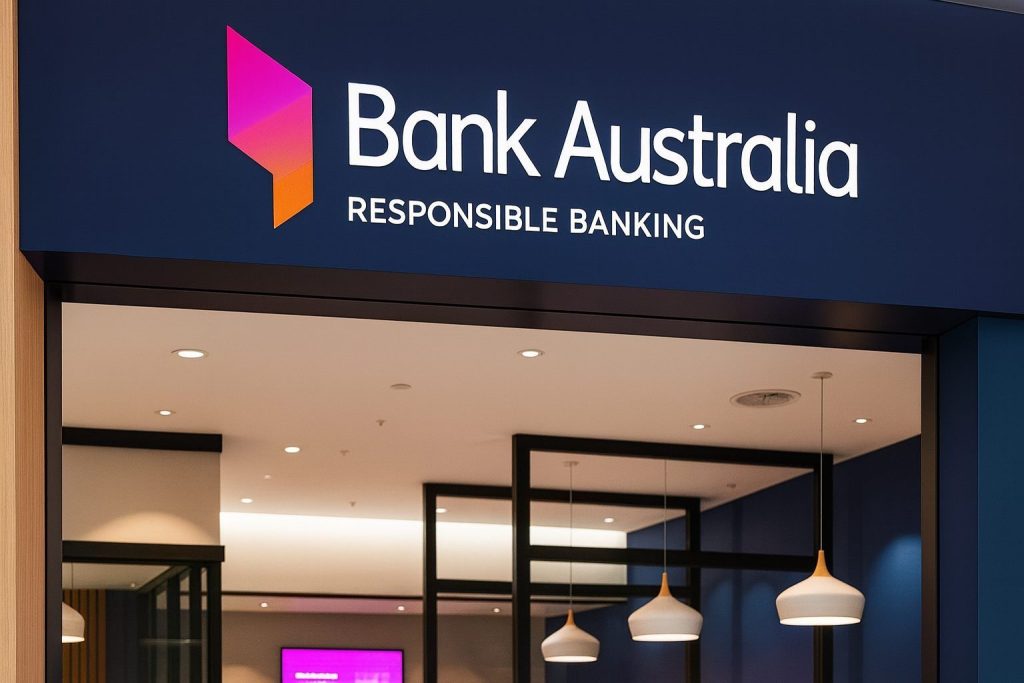Royal Caribbean Group (NYSE: RCL) heads into the new trading week after a sharp post‑earnings pullback, strong 2025 guidance, and big long‑term growth bets on new ships and private destinations. Here’s what investors need to know about Royal Caribbean stock today, November 24, 2025.
Royal Caribbean stock price today: where RCL stands
As of the last regular session on Friday, November 21, 2025, Royal Caribbean Group (RCL) closed at $264.09. That was a gain of roughly 4.5% on the day, with shares trading between $254.16 and $267.57 during the session. [1]
Over the past year, the stock has traded in a wide 52‑week range of $164.01 to $366.50. The high was set on August 29, 2025, while the low came in early April. [2]
At Friday’s close, RCL is:
- About 28% below its 52‑week high
- Roughly 60% above its 52‑week low
Market data providers put Royal Caribbean’s market capitalization around the low‑ to mid‑$70 billion range, with a trailing P/E ratio near 17–18x based on about $15 in trailing twelve‑month EPS. [3]
For context, the after‑hours quote on November 21 ticked slightly higher, but regular‑session pricing is what most investors will anchor to as markets head into Monday, November 24. [4]
Note: All prices and valuation metrics are as of the close on November 21, 2025, and will change as trading resumes.
Why Royal Caribbean stock has been so volatile into late November
Despite Friday’s bounce, Royal Caribbean has been under pressure since its Q3 2025 earnings on October 28.
- Following earnings, shares initially fell about 7–9% as investors reacted to a revenue miss and a more cautious near‑term outlook. [5]
- Forbes and other outlets estimate that RCL is down roughly 16–20% over the past few weeks, reflecting a sharp pullback from late‑October levels above $320. [6]
- MarketWatch recently noted that the stock remains around 30% below its 52‑week high, even after strong year‑to‑date gains earlier in 2025. [7]
Two main narratives are driving this volatility:
- Fundamentals are very strong right now – earnings, bookings, and pricing all look robust.
- Guidance and spending plans have spooked some investors, especially around 2026 profitability, ship‑building costs, and macro uncertainty.
Let’s unpack those pieces.
Q3 2025 earnings: strong numbers, cautious guidance
Royal Caribbean’s third quarter of 2025 was objectively powerful:
- Adjusted EPS: $5.75 (vs. ~$5.69 expected)
- GAAP EPS: $5.74
- Revenue: $5.14 billion, up about 5–10% year over year, but slightly below consensus estimates around $5.17–$5.2 billion. [8]
- Net income: roughly $1.6 billion, up strongly from about $1.1 billion a year earlier. [9]
Management also raised full‑year 2025 guidance:
- Adjusted EPS guidance is now $15.58–$15.63, implying about 32% year‑over‑year growth. [10]
- Net yields (a key profitability metric for cruise lines) are expected to rise 3.5–4% for the full year, with costs excluding fuel roughly flat to slightly down in constant currency. [11]
Operationally, the story remains very positive:
- Booked load factors (how full the ships are) for 2025 and 2026 are at record levels, with pricing tracking at the high end of historical ranges. [12]
- Management highlighted “accelerated demand, growing loyalty, and all‑time‑high guest satisfaction,” reinforcing the strength of Royal Caribbean’s “commercial flywheel” of new ships, exclusive destinations, and strong brands. [13]
So why did the stock fall?
The 2026 “$17 handle” EPS guidance
On the Q3 call and in follow‑up commentary, CEO Jason Liberty indicated that 2026 earnings per share are expected to “have a $17 handle”, i.e., somewhere in the $17‑plus range. [14]
Wall Street consensus had been closer to $18–$18.2 for 2026 EPS, so the softer‑than‑expected long‑term outlook triggered a reset in expectations and a wave of target price cuts from banks like Barclays and others. [15]
At the same time, Royal Caribbean guided Q4 2025 EPS below analyst forecasts, citing:
- Rising operating expenses (including fuel and maintenance)
- Weather impacts
- The extended closure of the company’s Labadee destination in Haiti
Those factors weighed on sentiment even as near‑term demand remains strong. [16]
Demand engine and growth pipeline: ships, destinations and digital flywheel
From a fundamental standpoint, Royal Caribbean continues to lean into a premium, capacity‑driven growth story.
Record bookings and digital monetization
Zacks and other analysts highlight that Royal Caribbean is enjoying record booked load factors for both 2025 and 2026, with pricing toward the high end of historical norms. [17]
Recent research also points to:
- Double‑digit growth in e‑commerce visits and conversion
- Nearly 90% of onboard revenue now booked pre‑cruise via digital channels
- Increasing use of data and AI to personalize offers and optimize pricing
This digital shift is seen as a key driver of higher yields and more scalable revenue growth over time. [18]
New ships: Icon Class and beyond
Royal Caribbean is also executing a large, multi‑year fleet expansion:
- The Icon Class (including Icon of the Seas and Star of the Seas) represents the world’s largest cruise ships, designed for high‑margin family vacations with extensive amenities and private‑island access. [19]
- In September 2025, the company confirmed an order for a fifth Icon Class ship for 2028 delivery and secured shipbuilding slots with Meyer Turku shipyard through 2036, including options for additional Icon‑class vessels. [20]
- Royal Caribbean is also rolling out a sweeping 2027–28 deployment, with Icon of the Seas set to sail out of Galveston, Texas from August 2027, alongside Liberty of the Seas and Symphony of the Seas and nine ships operating from Texas, California, and the U.S. Northeast. [21]
Exclusive destinations: Royal Beach Club Santorini and more
To deepen its “vacation ecosystem,” Royal Caribbean is investing heavily in exclusive, cruise‑line‑only destinations:
- Royal Beach Club Santorini, the company’s first private beach club in Europe, is slated to open in summer 2026, expanding its destination portfolio beyond the Caribbean and The Bahamas. [22]
- Management has laid out a plan to grow its portfolio of exclusive land‑based destinations from two to eight by 2028, including projects like Royal Beach Club Santorini, Royal Beach Club Cozumel, and new Perfect Day‑branded experiences. [23]
These investments support the “commercial flywheel” management frequently emphasizes: bigger, more innovative ships plus exclusive destinations and powerful brands drive higher pricing, onboard spending, and loyalty.
Balance sheet, dividends and valuation: how does RCL look on the numbers?
Debt and liquidity
Like most cruise operators, Royal Caribbean still carries significant leverage from the pandemic era and the ongoing shipbuilding program:
- Recent filings and ratio services show a debt‑to‑equity ratio around 2x, with current ratio around 0.16 and limited near‑term liquidity buffers relative to total obligations. [24]
That level of leverage can amplify both upside and downside in earnings and equity value, especially in a cyclical, capital‑intensive industry.
Dividend profile
RCL suspended its dividend during the pandemic but has been stepping it back up aggressively:
- In 2024, the company reinstated a $0.40–0.55 quarterly dividend.
- In 2025, it raised the quarterly payout to $0.75, and then again to $1.00 per share with the October 13 payment, a 33% increase from the prior level. [25]
- Based on an annualized $4.00 per share and the current share price near $264, the forward dividend yield sits around 1.5%. [26]
The payout ratio remains relatively modest versus expected earnings, suggesting room for further increases over time if the earnings trajectory holds.
Valuation vs. growth
On valuation, Royal Caribbean sits in something of a middle ground:
- Trailing P/E: around 17–18x using ~ $15 in trailing EPS. [27]
- Forward earnings expectations: consensus calls for ~32% EPS growth in 2025 and mid‑teens growth in 2026. [28]
Zacks data, for example, points to consensus EPS growth of roughly 32.5% for 2025 and about 14–15% for 2026, implying that the stock trades at a forward P/E in the mid‑teens, below some leisure peers despite its premium positioning. [29]
In other words, RCL is not “cheap” in absolute P/E terms, but many analysts see the valuation as reasonable—or even attractive—relative to its growth profile, pricing power and brand strength, especially if macro headwinds ease.
What Wall Street thinks about Royal Caribbean stock now
Despite the recent pullback, analyst sentiment is still broadly constructive:
- MarketBeat data shows a consensus “Moderate Buy” rating based on around 24 analysts, with most listing the stock as Buy or Strong Buy and a minority at Hold. [30]
- The average 12‑month price target sits around $326.82, implying roughly 24% upside from recent levels. High targets go up to $415, while the lowest are around $230. [31]
- Some firms, like Barclays, Citigroup, and Stifel, have trimmed targets in response to the 2026 guidance but still maintain Buy/Overweight ratings. [32]
- William Blair recently reiterated its Outperform rating on Royal Caribbean, even while slightly trimming long‑term EPS estimates. [33]
At the same time, several research notes and Zacks commentary highlight that:
- The stock has dropped 15–20% since late October,
- Yet booking and pricing trends remain robust, and
- The valuation has de‑rated from earlier 2025 levels, potentially creating an opportunity for investors comfortable with volatility. [34]
Key risks investors should keep in mind
Even with strong fundamentals today, Royal Caribbean stock comes with meaningful risks:
- High leverage and capital intensity
The company still carries a heavy debt load, with a debt‑to‑equity ratio around 2x and major shipbuilding commitments through at least 2028. That magnifies sensitivity to interest rates, downturns in travel demand, or operational disruptions. [35] - Cost inflation and ship‑related expenses
Recent commentary from Royal Caribbean and coverage from outlets like Investopedia emphasize that new megaships can pressure near‑term margins, as launch costs and higher operating expenses hit before revenue fully ramps. [36] - Macro and consumer‑spending risk
While the company says vacation spending, especially among higher‑income consumers, remains resilient, cruises are still discretionary. A weaker economy, higher unemployment, or renewed inflation could soften demand or force more aggressive discounting. [37] - Geopolitical and weather disruptions
The temporary closure of Labadee in Haiti, plus hurricane activity and geopolitical tensions, shows how quickly itinerary and destination risk can affect revenue and margins. [38] - Execution on long‑term projects
Royal Caribbean’s strategy assumes continued success in rolling out new ships and exclusive destinations like Royal Beach Club Santorini and Cozumel. Delays, cost overruns, or weaker‑than‑expected returns on these projects could weigh on the investment case. [39]
What today’s setup means for Royal Caribbean stock investors
Going into Monday, November 24, 2025, the Royal Caribbean story looks like this:
- Near‑term fundamentals are strong. Bookings, pricing, and onboard spending are robust, margins are healthy, and 2025 EPS is set to grow by more than 30% year over year if guidance is met. [40]
- 2026 guidance is solid but no longer “blow‑out.” The “$17 handle” for 2026 EPS, while implying growth, is below prior Street expectations and has triggered a repricing in the stock. [41]
- Valuation has reset. With the shares roughly 28% below their 52‑week high and trading at mid‑teens forward multiples, many analysts see a more balanced risk/reward profile than earlier in 2025—especially for investors willing to tolerate volatility and leverage. [42]
- Growth optionality remains meaningful. The Icon Class rollout, new beach clubs, and expanding digital monetization give Royal Caribbean multiple levers for earnings and cash‑flow growth beyond 2026. [43]
For short‑term traders, RCL’s high beta (around 2) and recent 20% pullback make it a volatile name that tends to move more than the broader market—both up and down. [44]
For longer‑term, research‑driven investors, the key questions now are:
- Do you believe Royal Caribbean can sustain high‑single‑digit to low‑double‑digit EPS growth beyond 2026, despite heavy capex and macro uncertainty?
- Are you comfortable with the company’s leverage and cyclical exposure in exchange for its brand strength, pricing power, and destination moat?
- Does a mid‑teens earnings multiple with ~1.5% yield and consensus upside of ~20–30% compensate you for the risks? [45]
As always, this overview is for informational and educational purposes only and not personal investment advice. Before buying or selling Royal Caribbean stock, consider your risk tolerance, time horizon, and overall portfolio, and consult a licensed financial professional if you need individualized guidance.
References
1. finance.yahoo.com, 2. www.financecharts.com, 3. fullratio.com, 4. www.marketwatch.com, 5. 247wallst.com, 6. www.forbes.com, 7. www.marketwatch.com, 8. www.chartmill.com, 9. www.travelweekly.com, 10. www.prnewswire.com, 11. www.prnewswire.com, 12. www.nasdaq.com, 13. royalcaribbeangrouppresscenter.com, 14. royalcaribbeangrouppresscenter.com, 15. www.gurufocus.com, 16. www.reuters.com, 17. www.nasdaq.com, 18. www.zacks.com, 19. www.royalcaribbean.com, 20. royalcaribbeangrouppresscenter.com, 21. www.royalcaribbeanpresscenter.com, 22. www.cruisecritic.com, 23. cruiseindustrynews.com, 24. www.financecharts.com, 25. www.rclinvestor.com, 26. www.dividend.com, 27. fullratio.com, 28. www.prnewswire.com, 29. finviz.com, 30. www.marketbeat.com, 31. www.marketbeat.com, 32. www.gurufocus.com, 33. www.investing.com, 34. www.forbes.com, 35. www.financecharts.com, 36. www.investopedia.com, 37. www.reuters.com, 38. www.rclinvestor.com, 39. www.royalcaribbeanpresscenter.com, 40. www.prnewswire.com, 41. www.seatrade-cruise.com, 42. www.financecharts.com, 43. royalcaribbeangrouppresscenter.com, 44. www.marketbeat.com, 45. www.marketbeat.com







